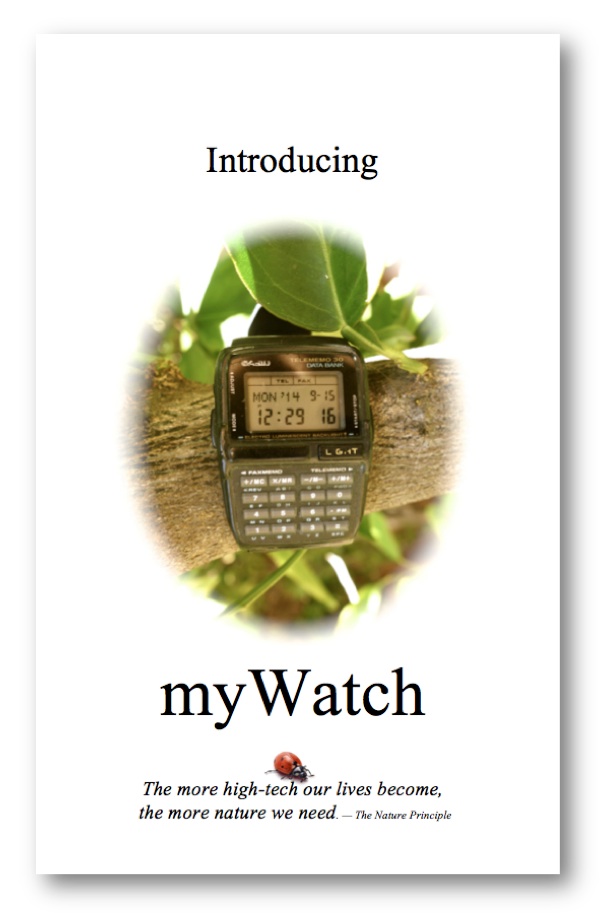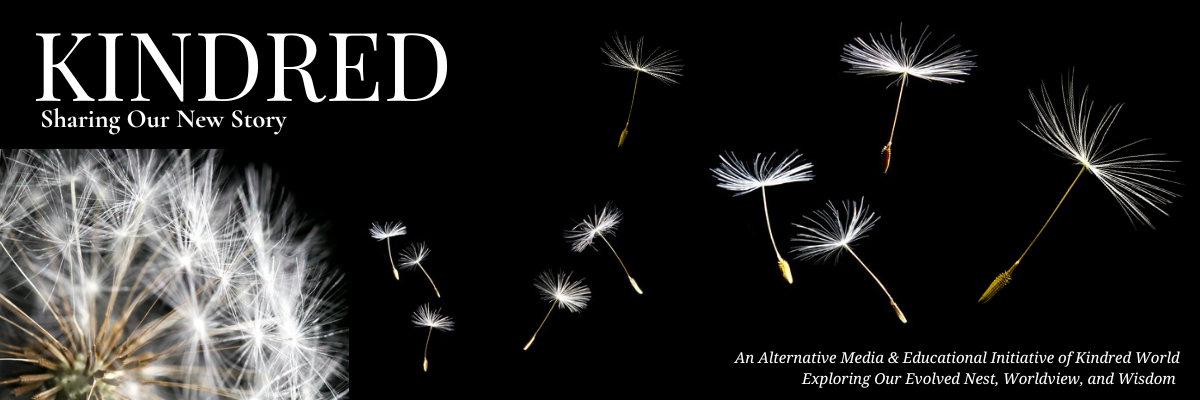Apple Watch, Meet myWatch: The More Hi-Tech We Become, The More Nature We Need
When it came to technology, I was once an early adopter. Now I’m a late arrival. After landing at the San Diego airport the other day, I was pulling my travel case down from the storage compartment when a young passenger in an expensive suit leaned over my shoulder and said:

“Excuse me, but I have to ask. Is that a vintage 1980s databank watch?”
A what? I looked at my wrist.
“I haven’t seen one of those in years,” he exclaimed.
I felt like I should call a Sotheby’s auctioneer. Or a gerontologist. The reason I still have this apparently steampunk watch (actually, it’s my third) isn’t the built-in calculator or the ability to store phone numbers, but because it’s the only watch I’ve found with an alarm that will ring long enough to wake me up.
Yet the guy in the suit was like a Mac fanatic getting a glimpse of the Apple 1. Or the 1975 Altair. Or better, the 1961 wearable computer, concealed in a shoe or a pack of cigarettes, designed by Edward O. Thorp and Claude Shannon to help them cheat at roulette.
To the point, last week Apple announced the Apple Watch, which will likely open the dyke to a flood of wearable computers. (Henceforth, I’ll refer to my watch as, well, myWatch.)
So, what does this have to do with nature, kids and the rest of us?
Best case scenario: We’ll find a sense of balance. Worst case scenario: The flood will carry us away, not only from nature but from ourselves.
In a 2013 study, Common Sense Media, an organization that provides “parents, educators, health organizations, and policymakers with… independent data on children’s use of technology,” reported a startling increase in media use by children under two years of age:
In just two years, from 2011 to 2013, the average amount of time children overall spent using mobile devices tripled. The number of children under eight years of age doubled, with seven of ten children reporting their use.
“Four out of ten children younger than two years of age are also using mobile devices, an increase from one in four during the same two-year period,” according to the report. To be more specific, 38 percent of toddlers and infants under 2 used a mobile device during those two years, compared to 10 percent in 2011.
Television-watching patterns have changed, but TV “still reigns supreme in children’s media lives,” according to the report. “Even among infants and toddlers, screen media use dwarfs time spent reading.” Children under two spend more than twice as much time watching TV screens as they do reading or being read to. TV aside, mobility is changing everything, and the transformation will accelerate as computers become more wearable.
“This is quite an extraordinary shift for our young children,” said James Steyer, CEO and founder of Common Sense Media. “In the past we could measure and control exactly where, when, and how they were engaging with screens. Now, mobile devices follow our kids from room to room.”
Though there’s some disagreement among researchers about where all the tech time is being borrowed from, it’s safe to say that sleep, non-tech play – and to some extent nature experiences – are not faring well. Arguably, neither is creativity.
Steve Jobs understood this. He didn’t let his young children touch an iPad.
The explosive growth of mobile devices used by toddlers came just as the American Academy of Pediatrics released updated guidelines on children and screen time in 2013, calling once again for families to discourage any screen use for those younger than two years of age.
All of this has troubling, if familiar, implications. But consider the story in this morning’s (Sept. 15) edition of The New York Times, which reports that California “is poised to become the first state to comprehensively restrict how such information is exploited by the growing education technology industry.”
At least one school uses a behavior-monitoring app “to compile information on which children have positive attitudes and which act out.”
And in some Georgia schools, students pay for lunch by having their palms scanned by a biometric identification system. In other words, Georgia schools are one-upping Apple’s announcement last week of Apple Pay, new software that allows people to pay at checkout stands using only their Apple Watches and iPhones. But what could be a more wearable than your own palm? Apple is so 2013.
Meanwhile, a growing body of research suggests that time spent in nature is just what the doctor ordered. It’s one of the best antidotes to the psychological, physical and cognitive downsides of a tech-dominated life. We’re going to need more nature. For balance. But here’s an unanswered question: Where’s the economic and political power that can stand up to the flood of tech into our lives – where’s the lobby for balance?
Before I get too riled up about this, I should check my pulse. There it is, under the plastic wristband of myWatch.
Watch Richard Louv Talk About Wonder:
“That moment of wonder that children experience in Nature is the source of all spiritual growth. How can we cut children off from that source? We are in danger of doing just that.”
Feature photo: Shutterstock/koko-tewan

